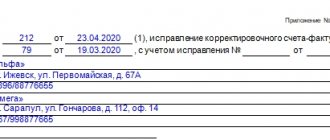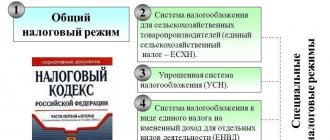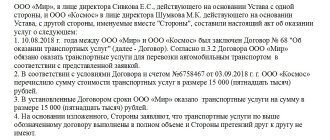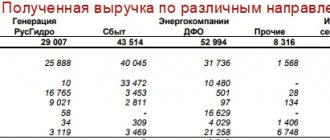Who and how should use FSBU 5/2019
From the point of view of application of FSBU 5/2019, all commercial organizations can be divided into three groups.
Micro-enterprises that use simplified accounting have the right not to apply the new standard at all. Such companies can immediately write off all purchased inventories as expenses (clause 2 of FSBU 5/2019).
But using the right to refuse the new FSBU is not advisable for all companies that are classified as “microbusinesses”. After all, if you write off inventory immediately, this means that the company will actually have no accounting of material assets.
The management of the organization will not be able to control the balances in the warehouse, analyze the material costs of products, etc. in most cases this option is not suitable for production and trade In addition, if the company records the write-off of materials in tax accounting, tax differences will arise.
Therefore, it is advisable to refuse to account for materials, first of all, for “micro-enterprises” from the service that operate on a “simplified” basis .
Small businesses that maintain simplified accounting must use FAS 5/2019, but may not apply some of its provisions. Representatives of microbusinesses are included in the category of small enterprises. Therefore, if such companies decide not to abandon inventory accounting, then they can also use FAS 5/2019 in a shortened format. We will talk about this in detail below.
Medium and large companies are required to use FAS 5/2019 in full, with one exception. All organizations, regardless of scale, can write off inventories intended for management needs immediately. Such supplies include, for example, various office supplies, consumables for office equipment, etc.
But not everyone is comfortable using this right. After all, tax accounting of “management” inventories is still necessary. Therefore, those who use OSNO and pay income tax (and these are all medium and large companies) will inevitably experience tax differences.
But small enterprises using the simplified tax system can, without any problems, refuse to account for inventories intended for management. Costs are written off in simplified terms upon payment; moreover, in a small business, “administrative” material costs are usually small.
Who belongs to micro, small and medium-sized businesses, and under what conditions small businesses can conduct simplified accounting - read here .
In what follows, we will simply say “small enterprises,” meaning that we are talking about companies that have the right to simplified accounting.
What has changed in the rules for classifying assets as inventories?
Inventories are assets that are “turned over” during a company's average operating cycle , or are used in a period of less than 12 months. The time-related criterion is new; it was not included in the previous rules for working with inventories (PBU 5/01).
As before, inventories include goods, finished products, raw materials, supplies, fuel, and tools.
In addition, several new categories are now included in reserves (clause 3 of FSBU 5/2019):
- Work in progress (WIP), i.e. costs of manufacturing products incurred before the completion of all technological processes or before acceptance of the product. WIP also includes the costs of work and services until they are completed and the certificates are signed by the customers.
- Real estate that an organization has purchased, built (or is building) for resale.
- Intellectual property that an organization has created (or is creating) for resale. These could be, for example, computer programs or works of art.
In order for assets from paragraphs 2 and 3 to be classified as inventories, trading in real estate or intellectual property must be part of the company’s ordinary activities.
In addition, one “specific” category is excluded from inventories - low-value fixed assets (FP). We are talking about fixed assets that cost less than a certain limit established in the organization. Since one of the characteristics of a fixed asset is a useful life of more than 12 months, they now, in principle, cannot be classified as inventories, regardless of cost.
According to the “old” PBU 6/01 “Fixed Assets,” which is still in effect in 2021, this limit can be up to 40 thousand rubles. New fixed assets accounting rules (FSBU 6/2020) allow companies to determine any “threshold” for classifying an asset as fixed assets.
FSBU 6/2020 will be mandatory for use from 2022, but it can be used voluntarily in 2021. However, in any case, fixed assets whose value is below the limit established by the company cannot be classified as inventories from 2021. The cost of acquiring such objects must be immediately written off as expenses (clause 5 of FSBU 6/2020 or clause 3 of FSBU 5/2019).
What has changed in estimating the cost of inventory upon purchase?
The cost of inventory when purchased includes not only the price of the supplier, but also various additional costs: delivery, sorting, etc.
FSBU 5/2019 added estimated liabilities for dismantling and environmental protection to the list of additional expenses. Interest on loans now needs to be included in the cost of inventories only if the materials are intended to create an investment asset. We are talking about objects that require a long time to prepare for use, i.e. first of all - about fixed assets (clause 11 of FSBU 5/2019).
In addition, when calculating the cost of inventory, it is necessary to take into account various discounts, bonuses, benefits and similar preferences that suppliers provide to the organization. For example, this could be a “volume” discount that the supplier gives when purchasing goods for a certain amount per month.
The new standard establishes a special procedure for accounting for the cost of inventories that were purchased with a long deferment (installment plan) of payment. By default, we are talking about a deferment exceeding 12 months, but the organization can set a shorter period.
Typically, with a long delay, the supplier's price is higher than with prepayment or settlement immediately after shipment. In this case, inventory should be recorded at the price that would have been paid if purchased without deferment. The difference between the actual and minimum price must be taken into account as interest on the loan (clause 13 of FSBU 5/2019).
If an organization pays for inventories in non-cash terms, for example, transfers other property in exchange or provides services, then the assets received must be valued at the fair value of the transferred property (services provided), or the inventories themselves. To do this, you should use the standard IFRS 13 “Fair value measurement” (Order of the Ministry of Finance of the Russian Federation dated December 28, 2015 No. 217n).
And only if the fair value cannot be determined, it is allowed to account for acquired inventories at the book value of the transferred property or at the cost of services rendered (clause 14 of FSBU 5/2019).
If inventories are received free of charge, then in any case they must be accounted for at fair value (clause 15 of FSBU 5/2019).
Small enterprises can significantly simplify for themselves the accounting of inventories upon their receipt (paragraph 4, paragraph 14 and paragraph 17 of FSBU 5/2019):
- Representatives of small businesses have the right not to take into account all additional costs (for example, delivery), as well as estimated liabilities, in the cost of inventories. Small businesses can include all such expenses in the costs of the current period. Thus, the cost of purchased inventory for small businesses will consist of the supplier's price only. Discounts and bonuses from suppliers can also be ignored.
- Small businesses can take inventory into account at the actual price, even if they are purchased with a long deferred payment.
- When paying in kind, small businesses have the right to evaluate purchased inventory at the book value of the transferred assets or at the actual costs of services rendered. Fair value under IFRS need not be determined.
But if the supplies were received free of charge, then representatives of small businesses will also have to calculate the fair value. Therefore, it is better for such companies, if possible, to avoid receiving inventory for free.
An interesting innovation that concerns all companies is the ability to change the unit of account without restrictions after taking inventory onto the balance sheet (clause 6 of FSBU 5/2019). Previously, an item, if necessary, could be changed only once at the time the inventory was posted, and then it was necessary to account for this type of inventory only in this format.
Trading enterprises may include in the cost of inventory the costs of delivering goods to central warehouses or bases. In addition, retailers have the right to record inventory at selling price. In this case, they must separately take into account markups and regularly review them (clauses 20, 21 FSBU 5/2019).
These rules for trade organizations have remained virtually unchanged compared to the “old” PBU 5/01. They apply to all companies, regardless of scale.
The procedure for determining the purchase price of goods
In accordance with the norms of accounting legislation, assets intended for resale are taken into account in accounting as inventories. Consequently, the valuation of goods in accounting is carried out similarly to the rules for valuing inventories established by the specified accounting standard.
According to paragraph 5 of PBU 5/01 “Accounting for inventories”, approved by Order of the Ministry of Finance of the Russian Federation dated June 9, 2001 No. 44n “On approval of the Accounting Regulations “Accounting for inventories” PBU 5/01″ (hereinafter referred to as PBU 5 /01) goods are accepted for accounting at actual cost.
In accordance with paragraph 6 of PBU 5/01, the actual cost of goods purchased for a fee (under a purchase and sale agreement) is recognized as the amount of the organization’s actual costs for the acquisition, excluding value added tax and other refundable taxes (except for cases provided for by the legislation of the Russian Federation) .
The actual costs of purchasing goods include:
- amounts paid in accordance with the agreement to the supplier (seller);
- amounts paid to organizations for information and consulting services related to the purchase of goods;
- customs duties in case of purchasing imported goods;
- non-refundable taxes paid in connection with the purchase of goods;
- amounts of remuneration paid to intermediary organizations through which goods are purchased;
- amounts of interest on borrowed funds accrued before the goods were accepted for accounting (in the event that borrowed funds were raised to purchase goods);
- costs of bringing goods to a condition in which they are suitable for sale.
- other costs directly related to the purchase of goods.
Note!
If the cost of delivery of goods is not included in their price, but is paid separately by the buyer, then delivery costs will also be included in the actual costs of purchasing the goods.
Employees of trade organizations call such expenses transportation and procurement expenses, which, as a rule, are:
- payment for carrier services for the delivery of goods, including for supplying wagons, weighing, loading into and unloading vehicles, costs of cargo insurance, payment for the services of forwarders, and so on;
- payment for temporary storage of goods at railway stations, piers, ports, airports within the normative limits
- deadlines established for the export of goods in accordance with concluded agreements;
fees for servicing access roads and non-public warehouses, including fees to railroads in accordance with agreements concluded with them.
In this case, we are talking about transportation costs for third-party services.
Costs associated with the delivery of goods (including loading and unloading operations) by transport and personnel of a trading organization are subject to inclusion in the corresponding items of sales expenses (labor costs, depreciation of fixed assets, and so on). Accordingly, such expenses should not be included in the purchase price of goods. General business or other similar expenses are not included in the actual costs of purchasing goods, unless they are directly related to the acquisition of goods.
Note!
Paragraph 13 of PBU 5/01 establishes a special rule for trade organizations, allowing them to take into account the costs of delivering goods not in the actual cost of the latter, but to include them in selling expenses.
Note!
Since accounting legislation regarding transport costs associated with the delivery of goods for trade organizations suggests two possible options for their accounting: either as part of the actual cost of goods, or as part of distribution costs, the trade organization must choose the option it uses and record its decision in accounting policy of the organization.
When considering the issues of formation of the actual cost, one cannot ignore the procedure for its formation in cases of receiving goods under supply contracts in which the price of the goods is “tied” to the currency equivalent or conventional monetary units. The conclusion of such contracts with suppliers almost always leads to the emergence of amount differences. If amount differences arise in such transactions, then the actual costs of purchasing goods are determined (increased or decreased) taking into account the amount differences.
Thus, based on the analysis of the accounting standard PBU 5/01 and all of the above, we can draw a conclusion that allows us to formulate the basic principle for the formation of the actual cost of goods: any expenses of the organization of trade directly related to the acquisition of a specific batch of goods are subject to reflection in account 41 “Goods”.
Let us show with an example how the actual cost of goods is formed.
Example 1.
Trade organization Saturn LLC purchased a batch of goods intended for resale. The costs associated with the purchase of this batch of goods from Saturn LLC amounted to: Cost of goods, according to the purchase and sale agreement - 177,000 rubles (including VAT - 27,000 rubles). The cost of carrier services is 5,900 rubles (including VAT - 900 rubles). The cost of the services of the intermediary through which Saturn LLC purchased these goods is 5,310 rubles (including VAT - 810 rubles). The accounting policy of Saturn LLC stipulates that transportation costs for the delivery of goods are included in their cost. Then, in the accounting of Saturn LLC, transactions related to the purchase of goods will look like this:
Account correspondence Amount, rubles Contents of operation Debit Credit 41 60 150 000 Goods received from supplier 19 60 27 000 The amount of VAT on purchased goods is reflected 41 76 5 000 The amount of transportation costs is included in the cost of goods 19 76 900 VAT on transport costs included 41 76 4 500 The cost of intermediary services is included in the cost of goods 19 76 810 VAT on commission fees included 60,76 51 188 210 The debt to the supplier, carrier and intermediary has been repaid 68 19 28 710 Accepted for deduction of VAT on goods paid and registered As a result, in account 41 “Goods”, Saturn LLC formed the actual cost of this batch of goods, which amounted to 159,500 rubles.
Now let’s assume that the accounting policy of Saturn LLC stipulates that the organization takes into account transportation costs for the delivery of goods as part of sales expenses.
Account correspondence Amount, rubles Contents of operation Debit Credit 41 60 150 000 Goods received from supplier 19 60 27 000 The amount of VAT on purchased goods is reflected 44 76 5 000 The amount of transportation costs is included in the cost of goods 19 76 900 VAT on transport costs included 41 76 4 500 The cost of intermediary services is included in the cost of goods 19 76 810 VAT on commission fees included 60,76 51 188 210 The debt to the supplier, carrier and intermediary has been repaid 68 19 28 710 Accepted for deduction of VAT on goods paid and registered In this case, the actual cost of this batch of goods was 154,500 rubles.
End of the example.
Any accountant knows the golden rule of accounting established by paragraph 12 of PBU 5/01: the actual cost of goods at which they are accepted for accounting is not subject to change in the future, except in cases established by the legislation of the Russian Federation and provided for in PBU 5/01.
However, a situation cannot be ruled out when some types of expenses that form the cost of goods cannot be determined at the time the goods are accepted for accounting. For example, an invoice from a transport organization was received by a trade organization later than the goods were accepted for accounting. In this case, transportation costs cannot be included in the actual cost of goods immediately. A similar situation may arise with the accounts of intermediaries through which goods were purchased.
Naturally, in this case, the accountant is faced with the question of which account to reflect these types of expenses and how to write them off in the future when selling goods. If you keep track of such expenses associated with the acquisition of goods as part of distribution costs, then this method will inevitably lead to a distortion of the financial result for the reporting period (except for cases where the goods are fully sold in this reporting period).
To prevent this from happening, you can use the second option provided by the Instructions for applying the chart of accounts to account 41 “Goods”, that is, reflect the process of purchasing goods using synthetic accounts 15 “Procurement and acquisition of material assets” and 16 “Deviations in the cost of material assets” .
If a trade organization decides to use this option, then it must approve, in the prescribed manner, discount prices, which are calculated by economists and set for a sufficiently long period. The use of accounts 15 and 16 will free the accounting service of the trade organization from additional calculations of the cost of goods sold. When using these accounts, the goods for sale will be written off from credit 41 “Goods” to the debit 90 “Sales” subaccount “Cost of sales” at accounting prices, and the amount of deviations of accounting prices from the actual cost of goods - from account 16 “Deviation in the cost of material valuables" to account 44 "Sales expenses".
If accounting prices in a trade organization change frequently, then it is most advisable to take as the accounting price either the supplier’s price indicated in the accompanying documents, or the amount of costs for purchasing the goods generated before it is registered. In this case, when writing off goods for sale, their value will be determined by the method established by the accounting policy (LIFO, FIFO, at average cost, at unit cost), based on the average values of the applied accounting prices.
Let's look at a specific example of the procedure for reflecting the receipt of goods in accounting using accounts 15 and 16. The mechanism for using these accounts is as follows:
The debit of account 15 “Procurement and acquisition of material assets” reflects the purchase price of goods and other expenses associated with their acquisition.
From the credit of account 15 to the debit of account 41 “Goods” the cost of goods accepted for accounting is written off at the accounting prices established in the trade organization. The difference between actual costs and accounting prices is written off to account 16 “Deviation in the cost of material assets.” In the future, when selling goods, this difference from account 16 is attributed to account 44 “Sales expenses”.
It should be borne in mind that when using accounts 15 and 16, two options are possible: when the accounting prices used by the trade organization are higher or lower than the actual costs incurred for the purchase of goods.
Example 2.
Saturn LLC, which sells building materials wholesale, in January 2005 received, under a supply agreement, a batch of paint - 200 cans intended for sale. The accounting policy of Saturn LLC stipulates that accounting of goods in the organization is carried out at discount prices. The discount price of 1 can of paint is 120 rubles.The costs associated with the purchase of this batch of paint from Saturn LLC were:
The cost of paint, according to the purchase and sale agreement, is 33,040 rubles (including VAT - 5,040 rubles). The cost of intermediary services is 1,652 rubles (including VAT - 252 rubles). Then in the accounting records of Saturn LLC, the procedure for reflecting the process of purchasing goods will be reflected as follows:
Account correspondence Amount, rubles Contents of operation Debit Credit 15 60 28 000 Received paint from supplier 19 60 5 040 The amount of VAT on purchased paint is reflected 15 76 1 400 The amount of transportation costs associated with the delivery of paint is reflected 19 76 252 VAT on transport costs included 41 15 24 000 Goods have been accepted for registration at discount prices (200 cans x 120 rubles) 16 15 5400 The variance in the cost of paint for the reporting period was written off. 60,76 51 34 692 The debt to the supplier and carrier has been repaid 68 19 5 292 Accepted for deduction of VAT on paid and registered paint According to our example, it is clear that the accounting prices used by Saturn LLC are less than the actual cost of paint.
End of the example.
Example 3.
Using the data from the same example, consider the case when accounting prices in a trade organization are set higher than the actual ones. For example, the discount price of 1 can of paint is 170 rubles.Then in the accounting of the organization Saturn LLC:
Account correspondence Amount, rubles Contents of operation Debit Credit 15 60 28 000 Received paint from supplier 19 60 5 040 The amount of VAT on purchased paint is reflected 15 76 1 400 The amount of transportation costs associated with the delivery of paint is reflected 19 76 252 VAT on transport costs included 41 15 34 000 Goods accepted for accounting at discount prices (200 cans x 170 rubles) 15 16 960 The variance in the cost of paint for the reporting period was written off. 60,76 51 34 692 The debt to the supplier and carrier has been repaid 68 19 5 292 Accepted for deduction of VAT on paid and registered paint End of the example.
The use of accounts 15 “Procurement and acquisition of material assets” and 16 “Deviation in the cost of material assets” allows a trading organization to record transactions with goods in transit. It happens that the ownership of the purchased goods has already transferred to the trading organization, and the documents for the goods are in its possession, but the goods themselves have not yet arrived at the organization. That is, the balance on account 15 “Procurement and acquisition of material assets” indicates the presence of goods that are in transit.
Example 4.
Ownership of goods transferred to a trading organization on November 20. This product arrived at the organization’s warehouse on December 5th. The cost of the purchased goods is 118,000 rubles, including VAT - 18,000 rubles. Transport costs for delivery of goods amounted to 9,440 rubles, including VAT - 1,440 rubles. The accounting policy of a trade organization stipulates that transportation costs are included in the cost of goods.In the accounting records of the organization, these transactions will be reflected as follows:
Account correspondence Amount, rubles Contents of operation Debit Credit 20 November 15 60 100 000 Ownership of the purchased goods is recognized 19 60 18 000 VAT on the product has been taken into account 5th of December 15 60 8 000 Transport costs are included in the cost of the goods 19 60 1 440 VAT reflected on transport costs 41 15 108 000 Goods are accepted for accounting at actual cost 60 51 127 440 Paid the debt to the supplier and carrier 68 19 26 000 Accepted for VAT deduction End of the example.
What has changed in the valuation of inventories created by the organization itself?
The new standard describes in detail the procedure for assessing inventories that the organization created itself (clauses 23 - 27 FSBU 5/2019). We are talking about finished goods (FP) and work in progress (WIP).
When assessing GP and WIP, one should take into account both direct costs, which can be attributed to specific products, and indirect costs, which are distributed according to the method chosen by the organization.
In mass and serial production, it is allowed to use simplified methods for assessing GP and WIP:
- Only for direct costs, excluding indirect ones.
- Based on planned costs.
For unit production, WIP should be valued only at actual costs.
The new standard separately regulates the procedure for assessing inventories that may “appear” to an organization as a result of dismantling or repairing fixed assets (clause 16 of FSBU 5/2019). In this case, the lesser of two values must be taken as the cost of the received inventory:
- The cost of the same inventory that an entity purchases or creates in the normal course of business.
- The sum of the book value of written-off fixed assets and the costs of dismantling and retrieving material assets suitable for further use.
“Finished products” - account 43 in accounting
Finished products should be recognized as a separate group of inventories, which is the result of production stages (cycles) and intended for further sale. Such inventories should be reflected in a special accounting account 43.
Accounting account 43 for dummies is an accounting account designed to account for material assets that the organization has produced independently.
Goods purchased by a company for resale should not be confused with finished goods (FG). The key feature that distinguishes account 41 from account 43 is the participation of the MPZ group in the production cycle. That is, if a company purchased goods for sale, but without processing, then such material assets are reflected in accounting account 41. And if the company purchases raw materials for processing, then the result of production will be considered a state enterprise.
How to revaluate inventories, and who may not do it
FSBU standard 5/2019 introduced a new rule - revaluation of inventories. In general, businessmen must compare two inventory values at each reporting date (clauses 28 - 31 of FSBU 5/2019):
- Cost according to accounting data.
- The estimated price at which the inventory could be sold in the normal course of business of the company.
If the estimated price is less than the cost according to accounting data, inventory depreciation occurs. This situation may arise, for example, when assets become obsolete, damaged, or market prices decline. The amount of impairment must be written off against a special reserve.
Small enterprises may not revaluate inventories and, during the entire storage period, record them at initial cost (clause 32 of FSBU 5/2019). This means that they do not need a reserve for depreciation of inventories.
Non-profit organizations (NPOs) also may not revaluate inventories that they use for their main activities (clause 33 of FSBU 5/2019). But if an NPO simultaneously conducts commercial activities, then the reserves used in it must be revalued on a general basis.
Accounting Features
Goods produced by the organization independently are reflected in the debit of accounting account 43. Upon disposal, the accounting account is credited for the amount of written-off or sold GP. The balance at 43 (account at the end of the month) can only be debit. In the balance sheet, the SOE is reflected as part of the assets of the enterprise.
For details, accounting provides for the opening of additional sub-accounts:
- 43-01 - in this sub-account the GP should be reflected at the planned cost;
- 43-02 - for accounting for state enterprises at actual cost.
Note that analytical accounting of SOEs should be carried out in the context of the types of semi-finished products or goods produced. That is, it is necessary to organize separate accounting.
What has changed in the order of write-off of inventories
The procedure for writing off the cost of inventories in the new standard has not fundamentally changed. Companies, as before, can choose one of three methods:
- Estimate the cost of each unit of inventory separately.
- Write off inventories at average cost.
- Use the FIFO method, i.e. begin to write off inventories at the prices of the assets acquired most recently. In this case, it is conventionally assumed that for production and other purposes, the stocks purchased earlier than others are used first.
There is a new condition for writing off inventories. Now they can be written off not only upon sale or other disposal, but also in the case when the organization decides that economic benefit cannot be expected from a particular type of asset in the future (clause “c” of paragraph 41 of FSBU 5/2019).
How to switch to the new FSBU standard 5/2019
An organization can use one of two methods of transition to a new accounting standard (clause 47 of FSBU 5/2019): prospective or retrospective.
If you choose a promising method, then the provisions of FAS 5/2019 will affect only those transactions that were carried out starting from 01/01/2021. Data for previous periods does not need to be recalculated.
The retrospective method means that the value of all “carry-over” inventory balances must be recalculated as if the provisions of FAS 5/2019 had already been applied at the time of their purchase (creation) in previous periods.
In this case, as of 01/01/2021, you need to make adjusting entries in correspondence with account 84 “Retained earnings (uncovered loss)”
- Write off assets that are no longer included in inventory, for example, low-value fixed assets or “management” materials
DT 84 - CT 10
- Adjust the valuation of goods and finished products to bring them to fair value
DT 41 (43) - KT 84 or DT 84 - KT 41 (43)
- Adjust the amount of the reserve to reduce the cost of inventory
DT 84 - KT 14 or DT 14 - KT 84
Postings from points 2 and 3 will be relevant mainly for medium and large companies. Small businesses, as mentioned above, in most cases may not determine fair value or create an allowance for impairment of inventory.
Typical wiring
We will determine which accounting entries to use to reflect finished products, which account should correspond when compiling records.
| Operation | Debit | Credit |
| Finished products in the warehouse (invoice) from the production workshop were capitalized | 43 | 20 23 29 |
| Semi-finished products produced in-house are reflected | 43 | 21 |
| GP is reflected as a discount to the buyer | 43 | 98 |
| The receipt of finished products is reflected as a contribution to the authorized capital of the company | 43 | 80 |
| GP decommissioned for solving commercial problems, for example, for presentation | 44 | 43 |
| GPs are written off when shortages and thefts are identified | 94 | 43 |
| Implementation reflected | 90 91 | 43 |
Conclusion
Since 2021, the new inventory accounting standard FSBU 5/2019 has come into force.
The list of inventories has been expanded: it now includes “work in progress”, as well as real estate and intangible assets acquired or created for resale. At the same time, low-value fixed assets were excluded from inventories.
Now accountants will have to more often use various valuation categories, for example - normal selling price, fair value, etc. Also, in general, organizations are required to revaluate inventories at each reporting date.
But small businesses have the right not to apply a number of provisions of the new standard. Those of them who exercise this right in full will account for reserves according to almost the same rules as before.
Micro-entities may choose not to apply the new standard at all and write off all inventory at the time of acquisition. But this option is not always convenient due to the inability to ensure control over values and deviations between accounting and tax accounting.





